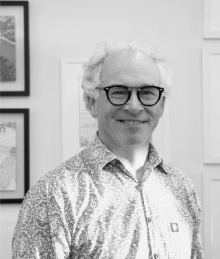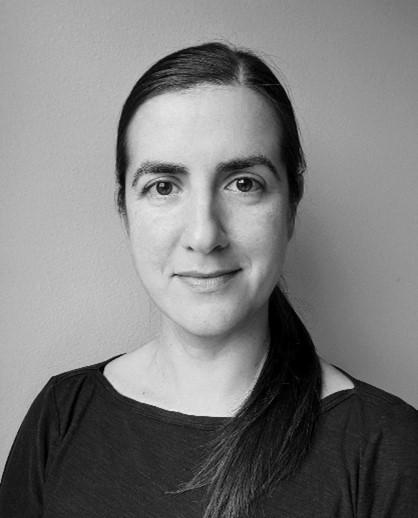Newly published work funded by the NIH BRAIN Initiative offers a precision toolkit for accessing cells in the brain and spinal cord with unprecedented accuracy. The new delivery tools, about 1,000 in all, can carry DNA into one or more target neural cells simultaneously.
This work was funded by the BRAIN Initiative’s Armamentarium for Precision Brain Cell Access. Since 2021, this project has focused on funding efforts that support the development of a collection of molecular genetic reagents to gain access to many different brain cell types.
This Q&A features responses to key questions from two of the toolkit’s lead scientists:
| Lead Scientists | |
|---|---|
Image

| Gordon Fishell, Ph.D., is Professor of Neurobiology, Harvard Medical School. Read more about Dr. Fishell. |
Image

| Bosiljka Tasic, Ph.D., is Director, Molecular Genetics at Allen Institute for Brain Science. |
Dr. Gordon Fishell helped identify how to target specific brain cells using the new tools. Dr. Bosiljka Tasic led work mapping different brain cell types and applied this information to design genetic switches for specific cell types.
Q: You’ve described the gene delivery toolkit as a “game-changer” for understanding brain research. Can you walk us through how these tools might be used for basic science now and clinical applications in the future?
A (Fishell): These new gene delivery tools let scientists target multiple specific cell types at once, making it possible to study entire brain circuits in ways that weren’t possible before. In basic research, this means we can ask much more precise questions about how different kinds of neurons work together. The same tools could also, in the future, enable highly targeted treatments. For example, these tools could adjust the activity of certain brain cells to restore healthy rhythms in various brain disorders. But it’s not just about switching cells on or off; it’s about fine-tuning how brain networks work together, like bringing an orchestra back into rhythm rather than adding more instruments mid-performance.
Q: This toolkit is freely available and already being adopted widely. Will it change everyday work in neuroscience labs?
A (Tasic): Yes! I’m excited for the moment when scientists studying any specific behavior or brain disease can pinpoint the exact cell type they’re interested in and browse a powerful library of genetic tools ready to unlock new discoveries. It’s like handing researchers a catalog of precision-crafted keys, each one designed to fit the cellular “lock” they’ve just identified, making it faster and easier to dive into the next phase of their research.
Q: The success of this work hinged on collaboration across nearly 30 institutions. What made this scientific collaboration so effective? Would it have been possible without the BRAIN Initiative?
A (Fishell): None of this would have been possible without the structure and support provided by the BRAIN Initiative. When we started this work, there were many unanswered questions and as many seemingly unsurmountable challenges. The willingness to share expertise and troubleshoot together created a true team spirit. As it turns out, big science truly does take a village.
A (Tasic): While some breakthroughs come out of individual labs, transformative tools like this toolkit require a lot of shared, often tedious, work as teams refine promising ideas and tackle the next challenge. The BRAIN Initiative allowed us to collaborate and exchange information—which was crucial for catalyzing these efforts.
Q: How did artificial intelligence (AI) help accelerate the discovery of effective gene switches, and what role do you see AI playing in future Armamentarium research?
A (Tasic): AI helped us throughout this work: analyzing the activity of 30,000 genes in every cell and helping us find the gene codes for switches. Moving forward, AI will help us custom-design molecular switches better than those that exist in nature.
A (Fishell): AI can gather information and parse data on a scale that no individual researcher could match. Since I began using AI regularly, what struck me most is how much it amplifies, rather than substitutes, human insight. The “human factor”—creativity, intuition, and judgment—remains irreplaceable. That said, AI’s role in expanding our capabilities is undeniable and growing fast.
Q: If you could fast-forward 10 years, what do you hope will be the most exciting clinical or scientific use that emerges from this collection of tools? How will continued NIH BRAIN Initiative support drive this progress?
A (Tasic): I hope we will connect every brain cell type to its function, enabling any neuroscientist to ask questions about specific cell types in living animals and humans. Beyond basic research, it is within reach for these tools to deliver therapeutic cargo to diseased cell types in the brain. This includes diseases like amyotrophic lateral sclerosis and other conditions in which we know which cells need repair.
A (Fishell): Looking ahead, with sustained investment, future advances will be nothing short of life changing. The real payoff from this work will be a true understanding of the ways networks of connected brain cells process information and work together. Also, by applying principles from the brain (which computes with the efficiency of a 20-watt light bulb), we could not only advance human health but also revolutionize computing beyond the limits of current technology.
